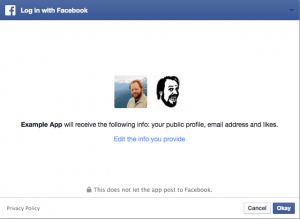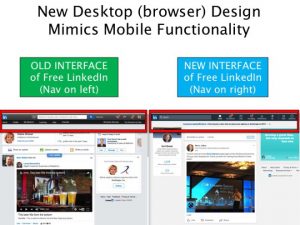— April 30, 2019
Nowadays, the majority of customers find information online. This is where they also make a purchase decision. It is said that more than 293 billion emails are sent and received every single day! You cannot ignore this number. Similarly, you mustn’t walk away from SEO and its crucial element – anchors, which are really shaping websites’ ranks.

How to efficiently use both practices in order to reach more customers, build loyalty and improve user experience?
What is email marketing?
Email marketing is one of the best marketing practices outweighing the importance of social media. Its effectiveness can help increase sales and an overall number of potential customers. After all, they already opted to receive a newsletter from your company, therefore, you can count on them, can’t you?
Online email services implicate that email marketing will never be effective if you send unconvincing messages to the wrong group of people. Just because you have a long list of subscribers does not mean they translate into a steady sales increase. Quite the opposite. Customers tend to pay less and less attention to your emails with time.
There are various types of emails you can send to your subscribers. Understanding their needs and patterns allows you to choose and tailor the right way in which you want to reach your customers. Therefore, depending on their profile, you can send transactional emails with details of their last purchase and some follow-up information, promotional emails such as newsletters, special offers, or so-called lifecycle emails based on their patterns.
When you incorporate both email marketing and a proper anchor strategy you can expect much more profitable results such as greater subscriber engagement and better CTR. Now, let’s have a look at what anchors are.

Anchors explained
To put it in a nutshell, an anchor is a text in the form of a hyperlink that you can click and it directs you to another website. Its nature is much more complex though. Anchors are essential elements of SEO and therefore, they make for better page rank. They are read by search engines’ algorithms, which further determine their relevance with the page they appear on. In other words, if your company sells lawn mowers and the anchor directs readers to an online casino, you can be more than sure that it will have a negative effect on the website’s rank, not to mention you can get a penalty.
There are various kinds of anchors you can use: branded, targeted, generic, plain URL, LSI, and images. Experts advise that the best strategy for both B2B and B2C companies is to build a good mix of all the anchors into your text in order to reach more potential customers.
In this article, we will focus on the targeted anchors, as they are meant to be one of the most efficient ones among all the other types. Although you should remember that SEO is all about balance and “quality above quantity” is the idea behind it.
Why should you implement email marketing and targeted anchor strategies?
An effective strategy is a complicated process and it should include both email marketing and targeted anchors. Why? They are crucial elements of every company’s business plan in building a targeted anchor text strategy.
Effective emails help you market the products or services you sell, while properly-used anchors may significantly determine your website’s search rank. Sounds highly beneficial, doesn’t it? But there is so much more to it.
Consider user experience. Aren’t you annoyed when you get an email you signed up for a long time ago, but it starts with “Dear Customer”, cannot be replied to and is extremely mobile unfriendly? This is just the tip of an iceberg, and we will look into those strategies in a little while.
Same story with anchors. Irrelevant links, nagging you to buy something or being extremely long that you forgot where they even started, will definitely increase the bounce rate, and drastically affect the user experience. You really don’t want to open this door, do you? No-brainer.
What are the most beneficial aspects of targeted emails and anchors?
- bigger potential reach
- not a lot of work required after the implementation
- little risks and costs involved
- analyzing and adjusting in order to find the best strategy for your company
The best practices in 2019
There is a strong bond between the right marketing strategy and the potential outcome. You can incorporate various methods into a successful email and anchor practices in order to achieve your goals, as long as you know what they are. Start with setting them before you move on with a particular marketing approach.
Email marketing
You may have several ideas on how to improve your email strategy. It is time to transfer them into actions.
Personalized emails
Nobody wants to be addressed by a shallow “Dear Customer” or “Hello there”. Make use of your customers database and start with their names. Personalizing emails will not only deliver better user experience but will also increase the number of transactions.
Can you believe that the majority of newsletters are not personalized? Surprising, isn’t it? Especially knowing it is really easy to execute. Apart from addressing your customers by their names try to add real contact info in the email signature to improve credibility. You should also avoid sending “donotreply” emails for the same reason.
Weekends vs weekdays
When is it best to send emails to your customers? Should you do it in the morning or in the evening? How about weekends? No, wait. Weekdays have to be better, don’t they? The truth is it all depends on the kind of business you have and more importantly your customers behaviour.
Once you get a better understanding of their patterns, you will know when to send your emails. Weekends or weekdays do not really matter that much. What is of the greatest importance here is the time of the day. What do you do first when you wake up in the morning? Check your emails, perhaps? We thought so. Therefore, maybe the best strategy is to send emails at night?
Segmentation
Subscriber segmentation is the second best practice with email marketing. Implementing it is very simple and you can do it with some CRM software. Why should you segment your database? It will allow you to target specific customers better to start with. It will also increase open rates, revenue, sales leads, deliverability, and transactions. Pretty incredible, huh?
Mobile-friendly emails
The majority of consumers open their emails on portable devices such as mobile phones and tablets. Therefore, you should really adjust the message format so that it fits smaller screens. What happens when they cannot read your email? They will most likely unsubscribe or delete it.
Improve the user experience and send your customers messages that, when clicked on, will direct them to your website. Call-to-action button that’s easy to tap. This is what we all need, don’t we?
Targeted anchor
Before you start implementing specific anchor strategies, make sure you have analyzed the existing ones and you understand what needs to be improved. Next, follow these steps.
Relevancy is priority
We have already mentioned that anchors should be relevant, meaning they should direct to websites that are somehow connected with the topic of your text (and the page for that matter). It is not only what Google wants to see, but also your readers aka customers.
If you care for them and want to establish trust and loyalty, you have to direct them to pages that are relevant and may be in the scope of their interest.
Variety
The best strategy is to use a variety of different anchors. You should not focus on one or two types as it will have a negative effect on your website’s rank. There are two schools though. One suggests that you should use branded anchors frequently, and targeted anchors are of least importance. Another school argues that it is targeted anchors that matter the most. So who is right?
It all depends on what you want to accomplish, but the best strategy is to include all types of anchors distributed in a natural way.
Test your anchor strategy
If you want to know if the strategy you implemented worked, you need to spend some time analyzing it. Being able to track your anchor performance will help you adjust them in the future to create an even better user experience. Finding the right approach for your business may take time, but it will pay off.
Conclusion
Whether it is email marketing or use of targeted anchors, you should acknowledge their benefits. Trends are changing quickly and being up to date with emerging strategies and practices is essential if you want to keep floating in the ocean of endless marketing possibilities.
Digital & Social Articles on Business 2 Community
(59)








